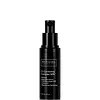What's inside
What's inside
 Key Ingredients
Key Ingredients

 Benefits
Benefits

 Concerns
Concerns

No concerns
 Ingredients Side-by-side
Ingredients Side-by-side

Water
Skin ConditioningTetrahexyldecyl Ascorbate
AntioxidantPentylene Glycol
Skin ConditioningDimethyl Isosorbide
SolventHydrolyzed Eruca Sativa Leaf
AntioxidantGlycerin
HumectantZea Mays Starch
AbsorbentCetearyl Glucoside
EmulsifyingHydrogenated Lecithin
EmulsifyingAcetyl Zingerone
AntioxidantPalmitoyl Glycine
CleansingCyclopentasiloxane
EmollientGlyceryl Caprylate
EmollientPlantago Lanceolata Leaf Extract
AntimicrobialDiglucosyl Gallic Acid
Squalane
EmollientSodium Carboxymethyl Beta-Glucan
CleansingEuterpe Oleracea Fruit Extract
Ergothioneine
AntioxidantPunica Granatum Extract
AstringentTocopherol
AntioxidantUbiquinone
AntioxidantAcrylates/C10-30 Alkyl Acrylate Crosspolymer
Emulsion StabilisingTriethanolamine
BufferingTocopheryl Acetate
AntioxidantLeuconostoc/Radish Root Ferment Filtrate
AntimicrobialPhenoxyethanol
PreservativeDisodium EDTA
PPG-12/Smdi Copolymer
EmollientXanthan Gum
EmulsifyingWater, Tetrahexyldecyl Ascorbate, Pentylene Glycol, Dimethyl Isosorbide, Hydrolyzed Eruca Sativa Leaf, Glycerin, Zea Mays Starch, Cetearyl Glucoside, Hydrogenated Lecithin, Acetyl Zingerone, Palmitoyl Glycine, Cyclopentasiloxane, Glyceryl Caprylate, Plantago Lanceolata Leaf Extract, Diglucosyl Gallic Acid, Squalane, Sodium Carboxymethyl Beta-Glucan, Euterpe Oleracea Fruit Extract, Ergothioneine, Punica Granatum Extract, Tocopherol, Ubiquinone, Acrylates/C10-30 Alkyl Acrylate Crosspolymer, Triethanolamine, Tocopheryl Acetate, Leuconostoc/Radish Root Ferment Filtrate, Phenoxyethanol, Disodium EDTA, PPG-12/Smdi Copolymer, Xanthan Gum
Water
Skin ConditioningSodium Ascorbyl Phosphate
AntioxidantPentylene Glycol
Skin ConditioningGlycerin
HumectantNiacinamide
SmoothingPropanediol
SolventCarrageenan
Erythritol
HumectantSodium PCA
HumectantXanthan Gum
Emulsifying1,2-Hexanediol
Skin ConditioningHydroxyacetophenone
AntioxidantAcetyl Hexapeptide-8
HumectantCaprylyl Glycol
EmollientDisodium Phosphate
BufferingSodium Phosphate
BufferingSodium Hyaluronate
HumectantAnogeissus Leiocarpus Bark Extract
Skin ProtectingSodium Phytate
Hydrangea Arborescens Root Extract
Skin ConditioningMorus Alba Root Extract
BleachingPolysorbate 20
EmulsifyingResveratrol
AntioxidantScutellaria Lateriflora Extract
Skin ConditioningPentapeptide-21
Skin ConditioningAvena Sativa Kernel Extract
AbrasiveWater, Sodium Ascorbyl Phosphate, Pentylene Glycol, Glycerin, Niacinamide, Propanediol, Carrageenan, Erythritol, Sodium PCA, Xanthan Gum, 1,2-Hexanediol, Hydroxyacetophenone, Acetyl Hexapeptide-8, Caprylyl Glycol, Disodium Phosphate, Sodium Phosphate, Sodium Hyaluronate, Anogeissus Leiocarpus Bark Extract, Sodium Phytate, Hydrangea Arborescens Root Extract, Morus Alba Root Extract, Polysorbate 20, Resveratrol, Scutellaria Lateriflora Extract, Pentapeptide-21, Avena Sativa Kernel Extract
Ingredients Explained
These ingredients are found in both products.
Ingredients higher up in an ingredient list are typically present in a larger amount.
Glycerin is already naturally found in your skin. It helps moisturize and protect your skin.
A study from 2016 found glycerin to be more effective as a humectant than AHAs and hyaluronic acid.
As a humectant, it helps the skin stay hydrated by pulling moisture to your skin. The low molecular weight of glycerin allows it to pull moisture into the deeper layers of your skin.
Hydrated skin improves your skin barrier; Your skin barrier helps protect against irritants and bacteria.
Glycerin has also been found to have antimicrobial and antiviral properties. Due to these properties, glycerin is often used in wound and burn treatments.
In cosmetics, glycerin is usually derived from plants such as soybean or palm. However, it can also be sourced from animals, such as tallow or animal fat.
This ingredient is organic, colorless, odorless, and non-toxic.
Glycerin is the name for this ingredient in American English. British English uses Glycerol/Glycerine.
Learn more about GlycerinPentylene glycol is typically used within a product to thicken it. It also adds a smooth, soft, and moisturizing feel to the product. It is naturally found in plants such as sugar beets.
The hydrophilic trait of Pentylene Glycol makes it a humectant. As a humectant, Pentylene Glycol helps draw moisture from the air to your skin. This can help keep your skin hydrated.
This property also makes Pentylene Glycol a great texture enhancer. It can also help thicken or stabilize a product.
Pentylene Glycol also acts as a mild preservative and helps to keep a product microbe-free.
Some people may experience mild eye and skin irritation from Pentylene Glycol. We always recommend speaking with a professional about using this ingredient in your routine.
Pentylene Glycol has a low molecular weight and is part of the 1,2-glycol family.
Learn more about Pentylene GlycolWater. It's the most common cosmetic ingredient of all. You'll usually see it at the top of ingredient lists, meaning that it makes up the largest part of the product.
So why is it so popular? Water most often acts as a solvent - this means that it helps dissolve other ingredients into the formulation.
You'll also recognize water as that liquid we all need to stay alive. If you see this, drink a glass of water. Stay hydrated!
Learn more about WaterXanthan gum is used as a stabilizer and thickener within cosmetic products. It helps give products a sticky, thick feeling - preventing them from being too runny.
On the technical side of things, xanthan gum is a polysaccharide - a combination consisting of multiple sugar molecules bonded together.
Xanthan gum is a pretty common and great ingredient. It is a natural, non-toxic, non-irritating ingredient that is also commonly used in food products.
Learn more about Xanthan Gum